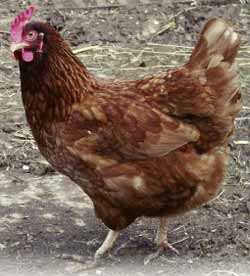



Climate Change and Poultry Production
Poultry flocks are particularly vulnerable to climate change because birds can only tolerate narrow temperature ranges. Poultry farmers need to consider making adaptations now to help reduce cost, risk and concern in the future, according to this report from UK-based Farming Futures in its Climate Change series.
Climate Changes Opportunities for Poultry Farmers
Savings may be possible: winter energy costs may reduce as warmer winters reduce the need to heat buildings and flocks can be acclimatised outside. Locally grown soya and maize would cut feed costs and poultry 'food miles'. Furthermore, meat products may increase in price and this – combined with feed prices possibly decreasing (due to the potential for soy yield to increase by 10 per cent as a result of rising carbon dioxide levels) – may make poultry farming more profitable.


Climate Changes Challenges
The challenges posed by climate change fit broadly into one of two categories: loss of productivity or increasing costs.
Regarding productivity, housing systems need to be managed to maintain optimal seasonal temperatures and reduce the risk of heat stress, and increased investment will be required in ventilation and cooling.
Reproductive capacity may decrease. Studies by the Department for the Environment, Food and Rural Affairs (Defra) on broiler hens found that a poultry house put under a future climate change scenario exceeded critical temperature on 30 per cent more occasions despite a 10 per cent increase in ventilation.
Furthermore, more dramatic events, such as storms, increase stress and may adversely affect productivity.
Costs are likely to increase as the result of the need to cool buildings more in summer and reduce house humidity. Building infrastructure and maintenance will have to cope with more intense weather events and increased rainfall. This means that building plans need to consider more sustainable options, with greater investment in drainage systems to accommodate more extreme and frequent floods and frequent rainfall.
Stocking density in the house may need to be reduced in extreme temperatures, and actively controlled ventilation could become essential in transportation vehicles.
Adaptation Suggestions
Poultry farmers should reconsider building design in new builds to more effectively cope with new climate and weather extremes, including the installation of more/new equipment to cope with new climate extremes.
Mitigating Measures
These include the installation of renewable energy – such as solar or wind power – to power poultry sheds, and using biomass boilers or anaerobic digestion of poultry litter.
Although some of the impacts might happen to a greater or lesser extent in the short, medium or longer term, it is important to think ahead for the future, especially in relation to issues such as building design.
August 2009








